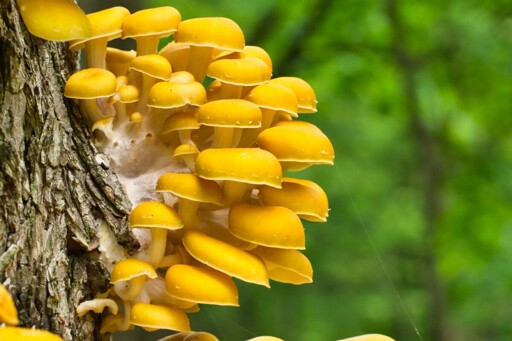Golden oyster mushrooms, known for their bright yellow caps and earthy flavors, are native to Asia. However, these prized edible mushrooms have gained popularity throughout North America, where they’re spreading across forests and displacing native fungal species, a recent study has found. Aishwarya Veerabahu, lead author and a doctoral student at the University of Wisconsin-Madison, U.S., told Mongabay by email that the study was prompted by a growing number of wild golden oyster observations in North America across citizen science biodiversity databases. “[T]he public, mushroom enthusiasts, and community scientists were logging their observations of this non-native mushroom on online biodiversity databases like iNaturalist and MushroomObserver,” Veerabahu said. “Local mycologists (Drs. Anne Pringle and Todd Osmundson) were also increasingly noticing this mushroom that they knew to be introduced to the region and were alarmed at how rapidly it was multiplying and spreading.” By Dec. 31, 2023, observations of the mushroom had been reported from 23 states in the U.S. and Ontario, Canada. To find out how the golden oyster’s spread could be affecting native fungal species, Veerabahu and her colleagues examined 78 samples of wood from 26 dead elm trees near Madison. Half of the trees had golden oysters growing on them. The team then used DNA analysis to identify the different fungi that grew on each sample. They found that trees with golden oysters hosted about half as many native fungal species as those that didn’t have them. “Though we have yet to study downstream impacts, we suspect changes to…This article was originally published on Mongabay
From Conservation news via this RSS feed


